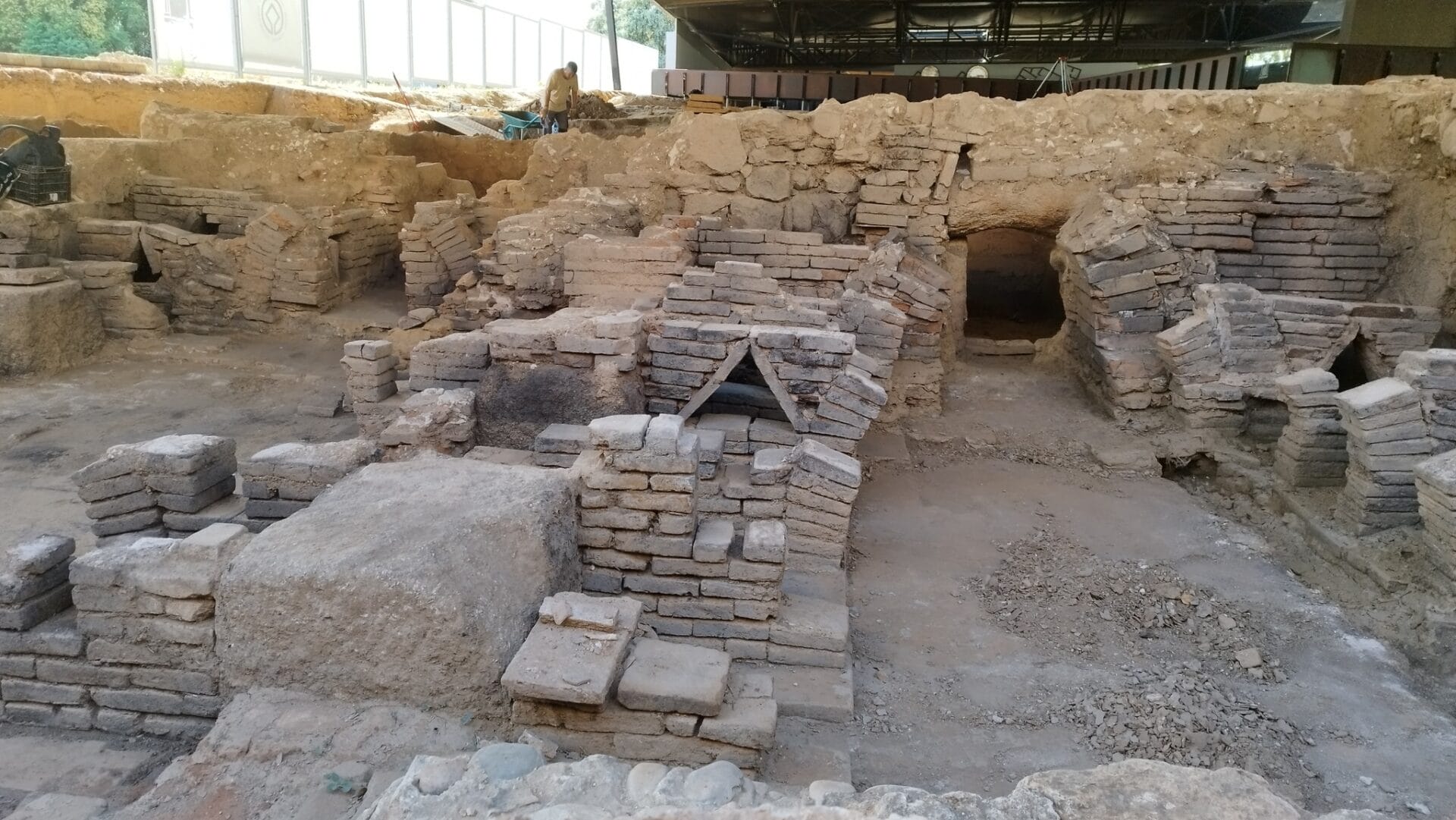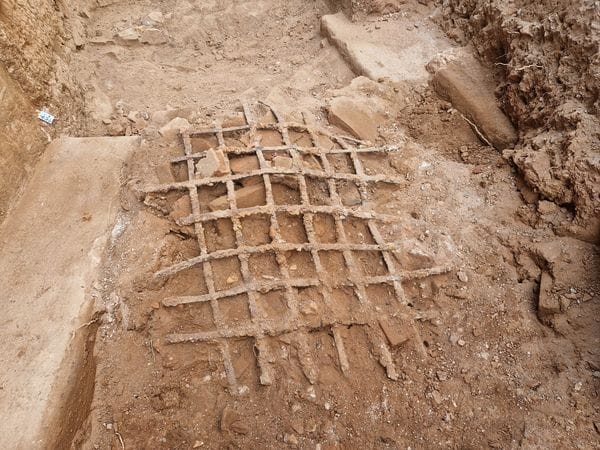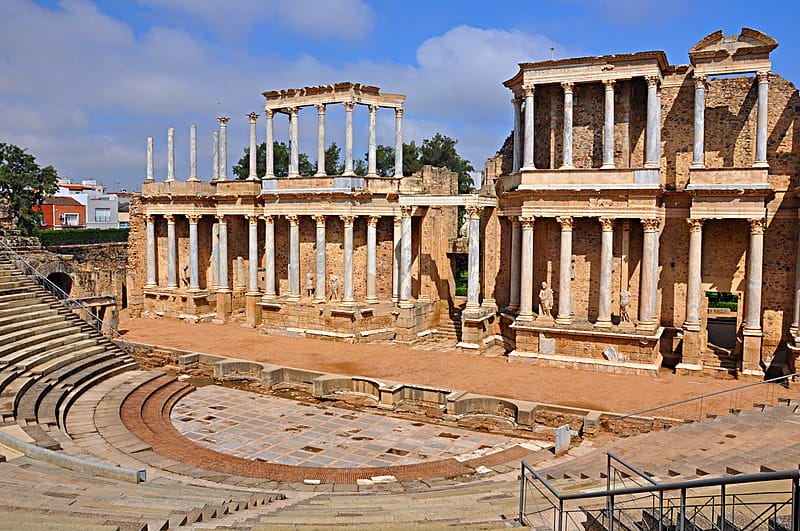In the heart of Spain, where history whispers through the stones and ancient structures, lies the city of Mérida and the newly discovered ancient Roman baths complex. Steeped in the grandeur of its Roman past, Mérida boasts a wealth of archaeological treasures, among which the ancient Roman baths complex stands as a testament to the city’s rich heritage. Nestled along the banks of the Guadiana River, Mérida was once known as Emerita Augusta, a bustling Roman colony founded in 25 BC by Emperor Augustus. From its inception, the city flourished as a strategic hub of commerce, culture, and governance, serving as the capital of the Roman province of Lusitania and a beacon of Roman civilization in the Iberian Peninsula.

The Roman Baths
At the heart of Mérida’s urban landscape stood the ancient Roman baths complex, a sprawling establishment dedicated to the pursuit of health, leisure, and socialization. Built during the 1st century AD, the bath complex was the perfect example of Roman engineering, featuring a sophisticated network of chambers, pools, and heating systems designed to cater to the needs of its patrons.
For centuries, the Roman baths complex served as a focal point of daily life in Mérida, attracting visitors from all walks of life to partake in the pleasures of communal bathing, relaxation, and socializing. Here, among the steam and echoes of laughter, citizens of Emerita Augusta forged friendships, conducted business, and celebrated the milestones of their lives. Over the millennia, however, the grandeur of the Roman baths faded into memory, its once-majestic halls crumbling beneath the weight of time and neglect. Yet, beneath the layers of earth and debris that obscured its ancient splendor lay a treasure trove of secrets waiting to be rediscovered by intrepid explorers.
In recent years, a team of archaeologists embarked on a mission to unearth the mysteries hidden beneath the surface of the ancient Roman baths complex in Mérida. Their efforts were rewarded in spectacular fashion when they unearthed an exceptional find that captured the world’s imagination and breathed new life into Mérida’s storied past. Beneath the rubble and debris of centuries lay well-preserved iron bars found in the remains of changing rooms at a bath complex in Mérida, Spain. The iron bars would once have covered a window, archaeologists said.

As news of the extraordinary find spread far and wide, scholars, historians, and enthusiasts flocked to Mérida to witness the marvels of antiquity firsthand and to ponder the significance of this remarkable discovery. The discovery of the Roman baths was not just a relic of the past but a testament to the enduring power of human ingenuity, creativity, and resilience. Among its many treasures, the ancient Roman baths complex emerges as a jewel in the city’s crown, a testament to the luxuriousness, sophistication, and cultural vibrancy of Roman society. Recently, a team of archaeologists unearthed an exceptional find within this venerable site, shedding new light on the lives of the ancient Romans who once walked its corridors.
A Glimpse into the Past
The ancient Roman baths complex in Mérida is more than just a relic of a bygone era, as it is a portal to the past, offering a glimpse into the daily lives of those who inhabited it over two millennia ago. Built during the reign of Emperor Augustus in the 1st century BC, these baths served as a hub of social, cultural, and recreational activity for the citizens of Emerita Augusta, as Mérida was known in Roman times.
Constructed with great attention to detail and engineering prowess, the bath complex comprised a series of interconnected chambers and pools, each designed to fulfill a specific function within the bathing ritual. From the frigidarium (cold room) to the caldarium (hot room), visitors could immerse themselves in a range of temperatures and experiences, rejuvenating both body and spirit in the process. Over the centuries, the Roman baths complex fell into disrepair, its once-grand halls crumbling beneath the weight of time and neglect. Yet, beneath the layers of earth and debris that accumulated over the centuries lay untold stories waiting to be rediscovered by intrepid archaeologists.
The History of Merida
The Casa del Anfiteatro, or the House of the Amphitheater, is a significant archaeological site located in Mérida, Spain, a city renowned for its rich Roman heritage. Situated within the UNESCO World Heritage Site of the Archaeological Ensemble of Mérida, the Casa del Anfiteatro is one of the most well-preserved and visually stunning examples of Roman residential architecture in the region.
Dating back to the 1st century AD, during the height of the Roman Empire, the Casa del Anfiteatro is believed to have been the luxurious residence of a wealthy Roman family. Its name derives from its proximity to the nearby Roman amphitheater, which served as a venue for gladiatorial contests, theatrical performances, and other spectacles that were popular types of entertainment in ancient Rome. The Casa del Anfiteatro consists of a series of interconnected rooms arranged around a central courtyard, typical of Roman domestic architecture. The layout of the house reflects the social and cultural norms of Roman society, with distinct areas designated for different functions, such as dining, entertainment, and relaxation.

One of the most striking features of the Casa del Anfiteatro is its elaborate mosaic floors, which are among the finest examples of Roman mosaic artistry found in Mérida. These intricate designs, composed of colorful tiles arranged in geometric patterns, floral motifs, and mythological scenes, attest to the wealth and sophistication of the house’s occupants. In addition to its architectural and artistic significance, the Casa del Anfiteatro provides valuable insights into the daily lives of its inhabitants and the social dynamics of Roman society. Through careful excavation and analysis, archaeologists have uncovered evidence of domestic activities, such as cooking, dining, and bathing, as well as evidence of the household’s economic activities, including trade and commerce.
The discovery of the Casa del Anfiteatro underscores the importance of Mérida as a thriving center of Roman civilization and highlights the city’s role as a cultural crossroads where Roman, Iberian, and other influences converged. As one of the most iconic landmarks in Mérida’s archaeological landscape, the Casa del Anfiteatro continues to attract visitors from around the world who come to marvel at its beauty and learn about the ancient civilizations that once thrived in this historic city.
Other Findings
One particularly noteworthy find was a collection of Roman coins minted during the reign of Emperor Trajan in the 1st century AD. These coins provided valuable insight into the city’s economic prosperity and its integration into the wider Roman Empire’s trade networks. They also offered clues about the political and social climate of the time, allowing historians to piece together a more comprehensive picture of life in ancient Mérida.
The excavation yielded evidence of the baths’ architectural layout and functionality, helping archaeologists reconstruct the complex’s original design and purpose. From the intricate network of underground heating pipes to the elaborate frescoes that adorned its walls, each discovery offered a glimpse into the ingenuity and engineering prowess of the ancient Romans.
Preservation and the Future
The exceptional find at the ancient Roman baths complex in Mérida holds profound implications for our understanding of Roman civilization and its enduring legacy. The discovery underscores the importance of preserving and protecting archaeological sites for future generations. As custodians of our shared heritage, we have a responsibility to safeguard these treasures, ensuring that they remain accessible for study, enjoyment, and inspiration for generations to come.
The exceptional find at the ancient Roman baths complex in Mérida, Spain, is a testament to the enduring legacy of Roman civilization. Through the discovery of a pristine mosaic floor and other valuable artifacts, archaeologists have unlocked secrets of the past and shed new light on the lives of Mérida’s ancient inhabitants. As we marvel at these treasures from antiquity, let us also reflect on the importance of preserving our cultural heritage for future generations.
People Also Ask:
Are there any Roman baths left?
Several Roman public baths still stand strong across Europe, albeit with some in better nick than others. You can view many via guided tours of the ruins, where visitors can explore underground passageways, original statues and pavements, and the walls of the great baths themselves.
What is the most beautiful Roman bath?
Among the most impressive Roman baths found anywhere in the world, the huge Baths of Caracalla in Rome are vast and impeccably preserved. It was Emperor Septimius Severus who began building these massive baths, but they are named after his son, the emperor Caracalla, who completed the works in 216 AD.
Who originally founded the Mérida archaeological site?
The Archaeological Ensemble of Mérida, located in Extremadura, Spain, has its origins in the year 25 BC when Augustus completed the conquest of the North of Hispania and founded the Colony of Augusta Emerita.
What is the history of Mérida Spain?
The town was founded by the Romans in 25 BC as Augusta Emerita. As the capital of Lusitania (a Roman province that encompassed modern Portugal), it became one of the most important towns in Iberia and was large enough to contain a garrison of 90,000 men. It prospered anew in the 7th century under the Visigoths.
Why did Roman baths disappear?
Environmental factors were likely a significant issue, as was funding from the emperor and wealthy Romans. Legislation from the fourth century reveals that firewood had to be brought into Rome from North Africa. It was costly for Roman patrons to pay for the massive amounts of fuel needed to keep the baths heated.
Hello, my name is Vladimir, and I am a part of the Roman-empire writing team.
I am a historian, and history is an integral part of my life.
To be honest, while I was in school, I didn’t like history so how did I end up studying it? Well, for that, I have to thank history-based strategy PC games. Thank you so much, Europa Universalis IV, and thank you, Medieval Total War.
Since games made me fall in love with history, I completed bachelor studies at Filozofski Fakultet Niš, a part of the University of Niš. My bachelor’s thesis was about Julis Caesar. Soon, I completed my master’s studies at the same university.
For years now, I have been working as a teacher in a local elementary school, but my passion for writing isn’t fulfilled, so I decided to pursue that ambition online. There were a few gigs, but most of them were not history-related.
Then I stumbled upon roman-empire.com, and now I am a part of something bigger. No, I am not a part of the ancient Roman Empire but of a creative writing team where I have the freedom to write about whatever I want. Yes, even about Star Wars. Stay tuned for that.
Anyway, I am better at writing about Rome than writing about me. But if you would like to contact me for any reason, you can do it at contact@roman-empire.net. Except for negative reviews, of course. 😀
Kind regards,
Vladimir
